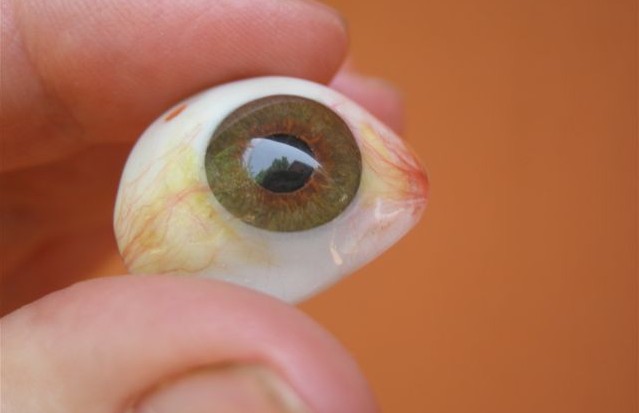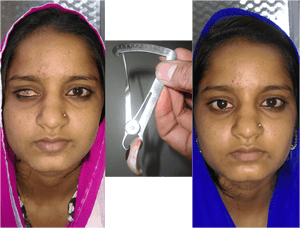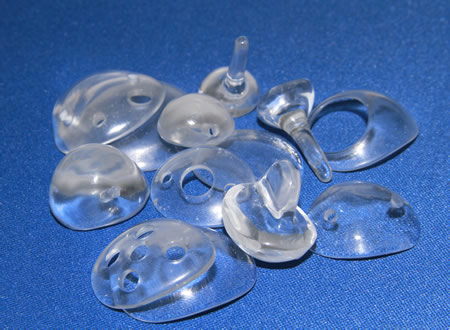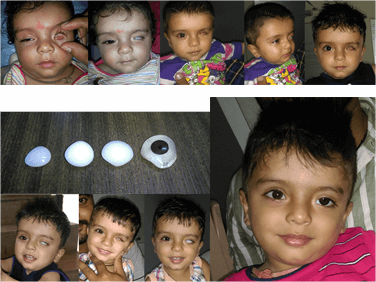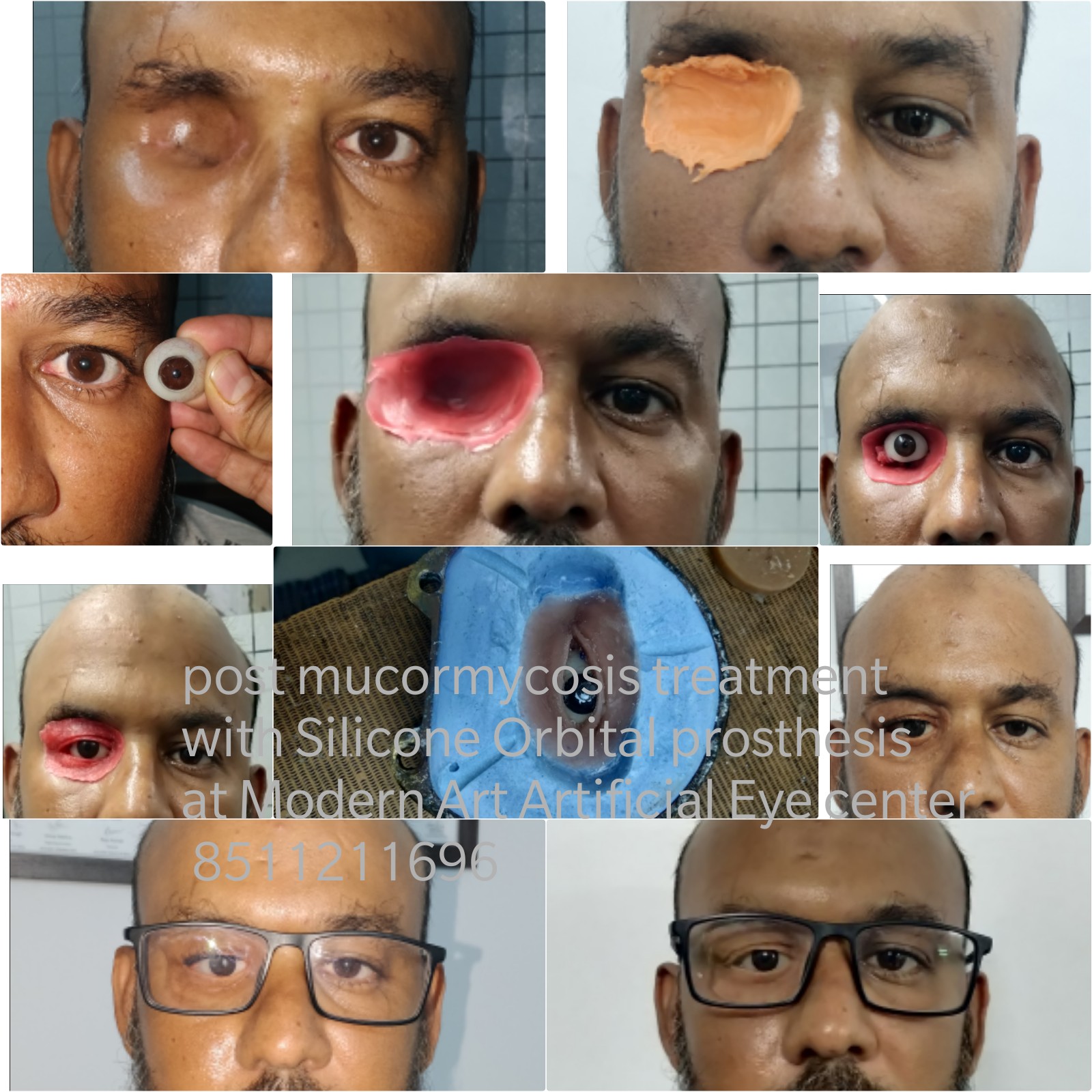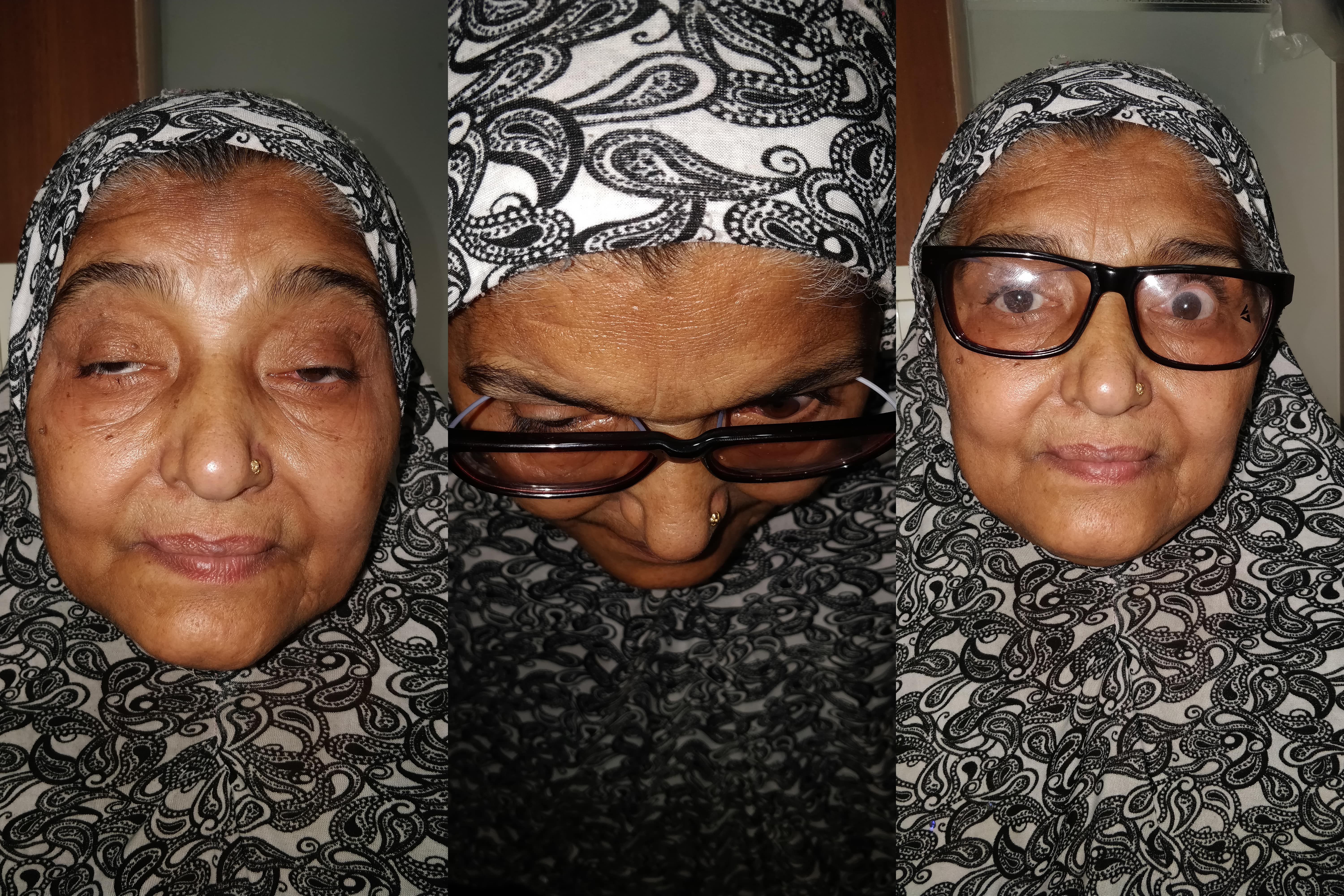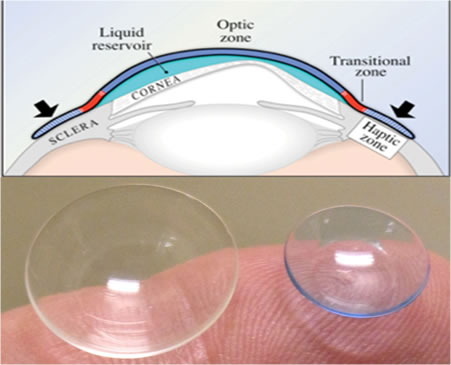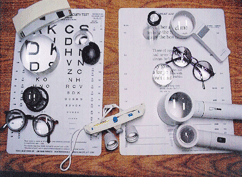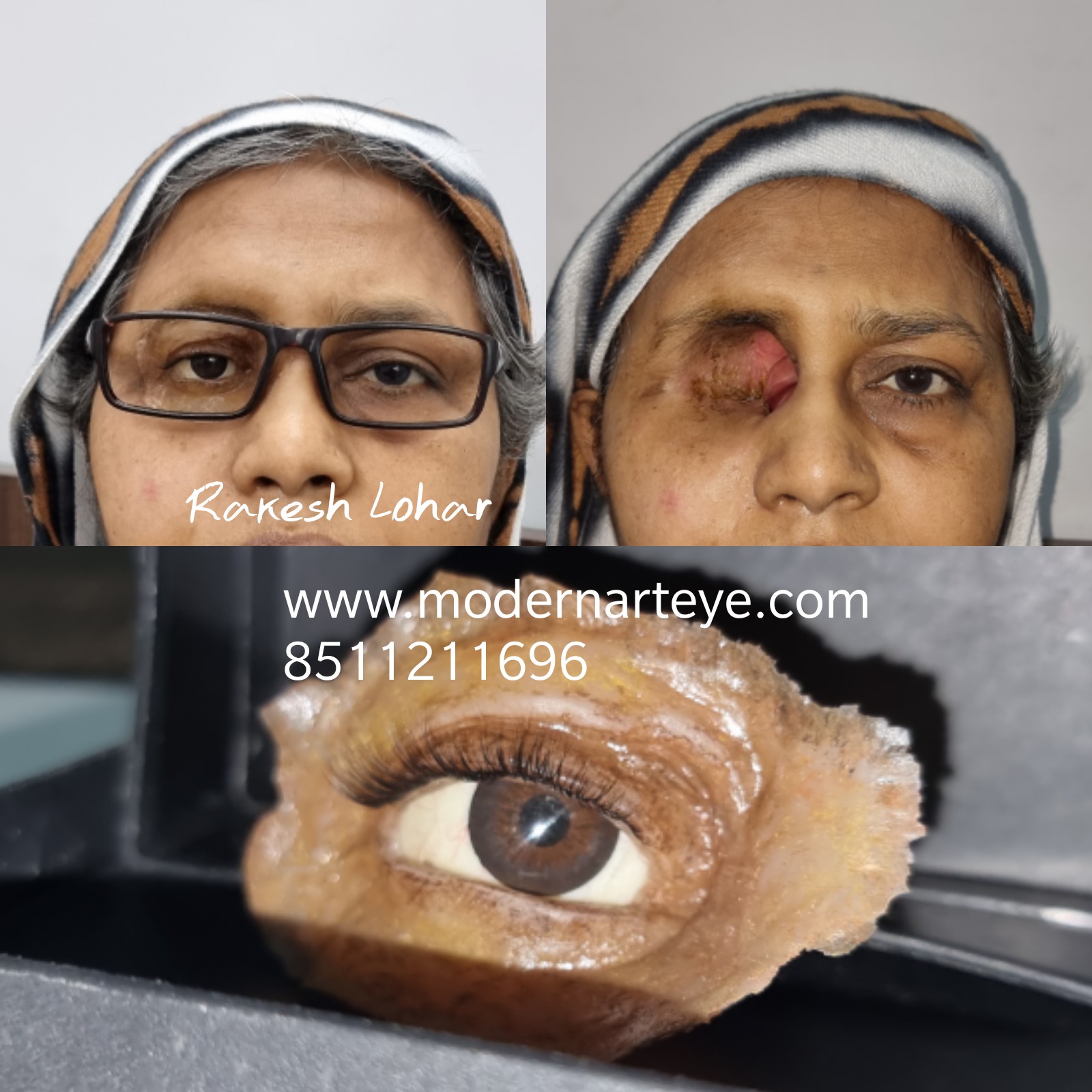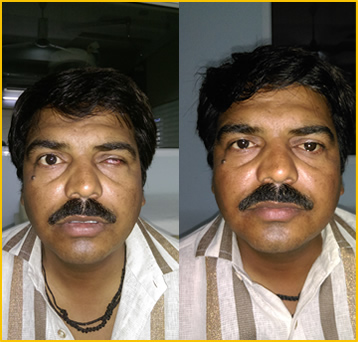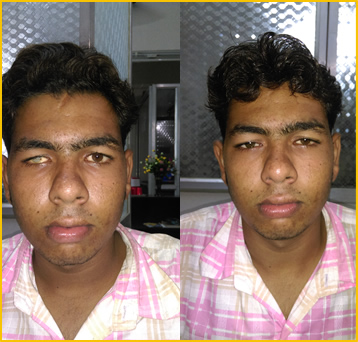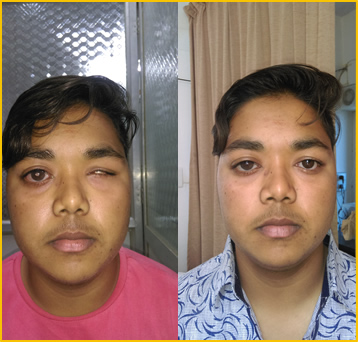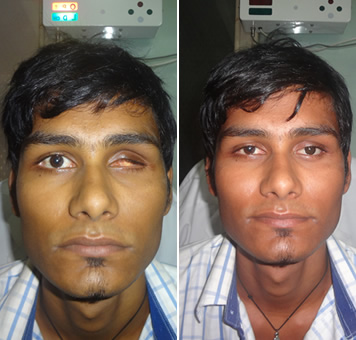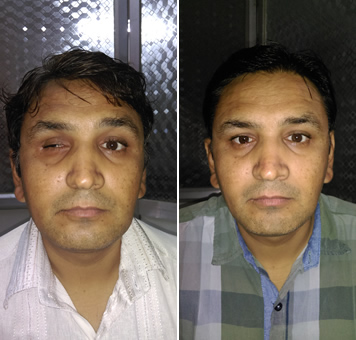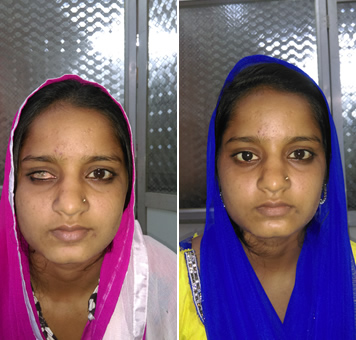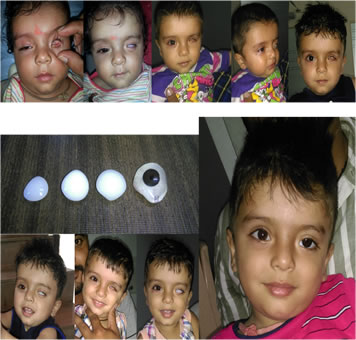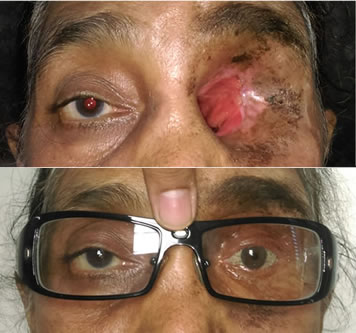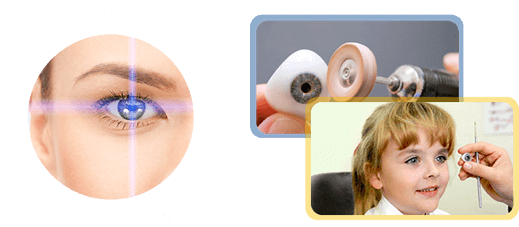
"Modern Art Eye"
It’s our pleasure to introduce our self, Modern Art is 1st exclusive and most advanced center for custom made ocular prosthesis/ Custom made artificial eye and Low Vision Devices in Gujarat which was established in 2012. It has completed 7 years with 1500+ satisfied patients across india. We have opened our 2nd and first exclusive center in Rajasthan (Udaipur) this year (2017). During this time, Modern Art has built a strong relationship with Opthalmologist's of Gujarat and Rajasthan in improving techniques to ensure the patient is happy with their new ocular prosthesis.
In present scenario good looking face is most important to present our self in front of others, and eyes are the most in it. One eyed parson can only realize it. Disfigured eye which have been caused by trauma, injury, chemical burn, post surgical complication, infections or are since birth.
We at Modern Art provide services for restructuring and rehabilitation of one eyed patients.
Our prime concern is comfort of the patient and cosmetic appearance. We make custom artificial eye for each and every patient according to their socket size, shape and fabrication match with fellow eye. In addition to creating the prosthetic eye, we show the patient how to care for and handle the prosthesis.
Our caring, understanding, and respectful approach ensures that our patients are completely comfortable with all aspects of the procedure and that their entire experience is a positive one. We are among the highly experienced Ocularists in the India and are dedicates to offering the latest advancements available. We will explain the process to each patient that how creating an artificial eye, how many appointments will be required, how to care for their ocular prosthetic. Our office is in Surat, Gujarat provides a welcoming place for our patient to come and discuss their individual needs.
Modern Art have a privilege of expert oculoplastic surgeon and experienced Ocularist to deliver the best results. Our wide range of services is unbeatable.
We have helped so many patients to lead normal and active lives. Please feel free with any questions or to schedule a free consultation. We look forward to meet with you to discuss the ocular prosthesis needs.
Although we cannot give you back your sight, we can give you back the cosmetic appearance of normalcy. We have helped thousands of patients achieve lead normal and active lives. Please contact us with any questions or to schedule a free consultation. We are looking forward for it.
About Us
Rakesh Lohar is basically from Rajasthan. Since childhood he was very keen for artistic work. After completing his basic education he has choose his career in medical healthcare to serve community. He did his Diploma in Optometry from FOREC in Neemuch. He wants to do higher education in this field, for that he went to L V Prashad Eye Institute, Hyderabad for 2 years fellowship (one of the best eye institute in the world). He did his Ocularisty training from Chinmaya Prosthetic Center, Delhi under supervision of Dr. Raj Anand in 2010.
He has worked in various top most eye institutes:
- Mahaveer Netralaya, Neemuch Madhya Pradesh (Dr. R K Bhandari).
- Bhairav Netra Chikitsala, Bisalpur, Pali, Rajasthan.
- Arihant Hospital, Bhilwara, Rajasthan.
- L V Prasad Eye Institute, Hyderabad.
- Aravind Eye Institute, Hyderabad.
- Eye Q eye hospitals.
- Alakh Nayan Mandir Eye Institute, Udaipur, Rajasthan (Dr. L.S. Jhala).
- Vasan Eye Care group.
- Netram Eye hospital, Surat, Gujarat.

After working with these esteemed hospitals he has planned to start his own exclusive center for Artificial Eye, Special Contact Lenses, Low Vision Devices and Orbital Prosthesis.
In 2012 he has opened his center “Modern Art” in Surat. His center work according to his slogan “Feel the difference on your face”.
He is member of optometry association of India and Ocularist society of India.
Our Services
Custom made artificial eye
Scleral shell
Customized conformer
Gradually socket expander
Orbital prosthesis
Prosthetic contact lenses
Crutch glasses
Scleral contact lenses
Low vision aids
What Our Patients Are Saying
FAQs
Q: How is the artificial eye held in?
Q: Do ocular prosthetics move?
Q: Does Health Insurance cover ocular prosthetics?
Q: How long does an artificial eye last?
Q: I just had my eye removed, what are the next steps?
Ideally, we see patients 1-2 weeks after the surgery. This visit allows us to meet with the patient & family, explain our process and ease anxiety about the restoration. During the initial visit, we exchange the conformer, replacing the generic post-op conformer with a custom-fit conformer.
The patient should visit after every 2 weeks in order to monitor healing and the conformers should be changed once the swelling starts reducing. For the final fit and movement of the prosthesis, regular visits are important.
About 6-8 weeks after the surgery, when the swelling has reduced enough for a tissue impression, and we begin the prosthesis. How long does it take to make an artificial eye?
It usually takes four appointments to make an artificial eye. An eye can be completed in 1 or 2 day, depending on one's preferred schedule.
Q: How often should an artificial eye be polished?
Q: My child was born with microphthalmia, is an ocular prosthesis necessary?
How to Handle Your Artificial Eyes
After the completion of your new artificial eye, one of your major questions on your mind is how to take care of your prosthesis and the best way to handle and clean it. The good news is that your prosthesis can easily be removed and replaced with some practice. Your artificial eye is held in place by the lower and upper eyelids and fit to the interior of the eye socket. Most patients wear their prosthesis full time, removing only occasionally to clean, while other patients remove their prosthesis at night. Wearing full time is ideal.
Before you get started with your prosthetic eye care, always remember to use clean hands when handling your prosthesis. Check your surroundings to make sure the prosthesis won't be damaged or lost if it is accidently dropped. The prosthesis should be removed only if it is necessary to clean or as often as directed. Too much handling can cause irritation to your socket and excess drainage.
Removing an artificial eye
WITH FINGERS

Pull down the lower eyelid with index finger, look up and slide finger towards the ear.
Allow the prosthesis to slide out over the lower lid. Gently remove prosthesis with free hand.
WITH SUCTION CUP

Open your eyelids, and then the suction cup should be applied to the prosthesis and then the handle should be squeezed.
The lower lid has to be pulled down carefully with your fingers. The prosthesis should be titled up over your lower lid. Then the suction cup should be squeezed in order to release the handle.
Inserting an artificial eye
WITH FINGERS

Lift upper lid with index finger to create an opening. Gently slide top edge of prosthesis under upper lid.
Release upper lid once prosthesis is in. The lower lid should be pulled down and then blink continuously to set prosthesis into position.
WITH SUCTION CUP

Suction cup should be attached to the prosthesis with the help of squeezing handle. The upper lid of your eye should be lifted up and the top edge of the prosthesis should be slided under the upper lid.
Release upper lid and pull down lower lid to seat prosthesis. Squeeze suction cup handle to release. Blink eyelids.
HANDLING A SCLERAL SHELL
Follow same handling instructions as artificial eyes.
It may be helpful to look down while removing and placing the scleral shell.
Wear as long as comfortable, removing at night if necessary.
Cleaning your artificial eye
Over time, the surface of the prosthesis collects protein and debris. Taking good care of your prosthesis helps to ensure a healthy socket and increase the life of your prosthesis.
Some patients find that removing and cleaning their prosthesis every day is necessary, while others are able to wear it for a couple weeks or longer before cleaning.
Cleaning the prosthesis every 2-3 weeks is ideal

Wash hands with soap and water.
Use water to rinse and softly scrub the prosthesis with your fingers, removing built-up protein and debris.
Only use baby shampoo when necessary and rinse thoroughly.
The artificial eye should be dried with the help of soft tissue and apply circular motion to the eye to give it a polished look.
Soak the eye with a warm wet tissue to remove build up proteins from your eyelids and eyelashes. It is also possible to clean the front of your prosthesis this way, without removing the prosthesis.
A professional polish is the only way to remove the protein attachments and bacterial infiltration. We recommend having your prosthesis polished every year, depending on your body chemistry. Please call today to schedule an appointment if your last polish was over 1 year ago.
HELPFUL HINTS FOR ARTIFICIAL EYE WEARERS
Always use clean hands when handling your prosthesis.
Check your surrounds to make sure the prosthesis won't be damaged or lost if it is accidentally dropped.
Irritation & excess drainage can be caused due to excessive handling, so the prosthesis should be removed only as directed by ocularist.
Outward wiping of eyelids can dislodge the prosthesis, so always close the eyelids and wipe towards nose.
Try to position your chin toward the person you are conversing with. Practice moving your head and shoulders, not just your eyes.
To protect your natural eye, use nicely fit glasses with polycarbonate lenses.
Do not store your eye in tissue, as it could accidentally be discarded.
Do not clean the prosthesis with any solvents, hand sanitizer or alcohol, as these chemicals may damage the prosthesis and your socket.
POLISHING YOUR ARTIFICIAL EYE
A professional polish provides comfort, a more natural appearance, and removes scratches, protein deposits and bacteria from the surface of the prosthesis. An examination will also be performed to ensure your tissue is healthy and your prosthesis is fitting correctly. This appointment also allows your ocularist to examine the orbit, ensuring that your tissue is healthy and your prosthesis is fitting correctly.
Professional polishing of prosthesis should be done every year.
Polishing of prosthesis is needed (required) when some of these symptoms occur:
Irritation or Itchiness caused in the eyelids
Increased drainage from prosthesis or feeling discomfort
Changes are visible in the appearance of eyelids (prosthesis)
Please contact us with any questions regarding the fit and care of your prosthesis.
REPLACING YOUR ARTIFICIAL EYE
Artificial eyes do need to be replaced. Eye sockets change shape over time, affecting comfort, movement, and appearance. The surface of the prosthesis also breaks down, resulting in an unhealthy formation of bacteria on the prosthesis.
An artificial eye should be replaced approximately every five years.
Some symptoms that may occur when one is in need of a replacement are:
increased drainage
dryness or discomfort
recurring infections
droopiness of the eyelids
changes in appearance
Please contact us with any questions regarding the fit and care of your prosthesis.
PROSTHETIC EYE LUBRICANTS
Extreme dryness, irritation and difficulty in blinking is occasionally experienced by the artificial eye wearers. Moisture from prosthesis tends to evaporate due to adverse weather, dust, wind and air-conditioning. Allergies and body changes can also contribute to dryness.
To apply a lubricant or eye drop to your prosthesis, place a drop on a clean finger and swipe across the prosthesis. Blink a few times, then close your eye and blot your skin with a tissue to remove any extra product. Silicone lubricants can be applied as needed, begin by applying morning and night. Water-based eye drops can also be applied as needed, typically every 2-3 hours.
We can recommend a variety of products to alleviate these symptoms and promote comfort. Please contact us.
Get In Touch We Love to Work with Passion
Modern Art Artificial Eye Center
B-107, Bhatar Trade Center,
Bhatar Char Rasta,
Surat- Gujrat. 395002
R3 Eye Care, Opp Mahalaxmi collection,
Near SBI ATM and Celebration Cafee,
BSNL Office Road, Hiran Magri, Sector 3,
Udaipur, Rajasthan
Ahemdabad :- With prior appointments only.
Vadodara :- With prior appointments only.

